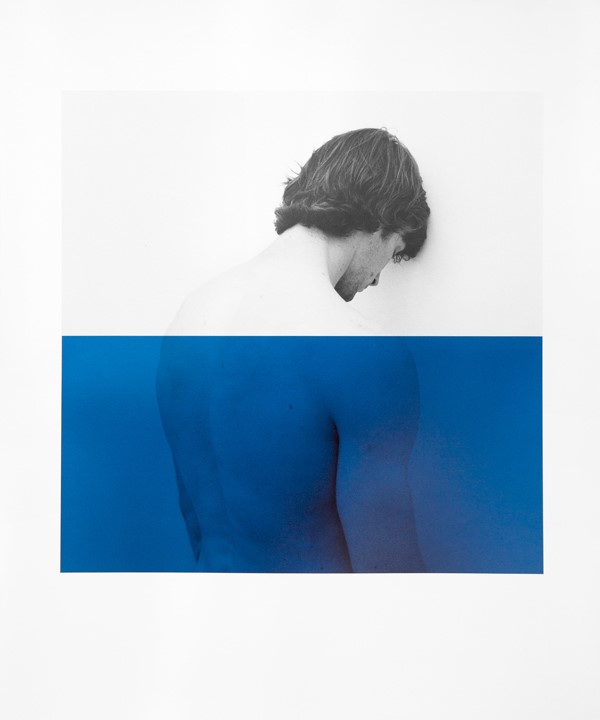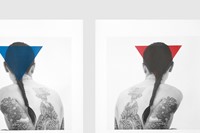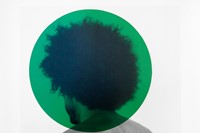Martinique-born and New York-based self taught photographer Thomas Dozol has had his work featured in Another Man, Vogue Paris, Paper and Interview. His first solo show, I’ll Be Your Mirror in 2008, received great critical acclaim, not because it

Martinique-born and New York-based self taught photographer Thomas Dozol has had his work featured in Another Man, Vogue Paris, Paper and Interview. His first solo show, I’ll Be Your Mirror in 2008, received great critical acclaim, not because it featured images of Gwyneth Paltrow and Dozol's boyfriend Michael Stipe, but because it was shot with an incredible intimacy, fragility and domestic stillness. Dozol’s subjects – who include 25 of his friends, acquaintances and family members – were shot 15 minutes after stepping out the shower: natural, raw and metaphorically stripped bare. For his current exhibition All Together Now, showing at NP Contemporary Arts Center in New York's Lower East Side, Dozol continues with this theme of closeness photographing models naked and cropped in on. Evoking propagandistic aesthetics his images appear like posters with graphic blocks of colour printed over his black and white nudes. Inspired by the optimism and utopia of Wannsee in Berlin and the Cité Radieuse of Le Corbusier in Marseilles, Dozol attempted to create his own visual language of utopian forms whilst at the same time leaving much speculation to the viewer. Here AnOther caught up with Dozol to discuss his initial ideas, process and the symbolism behind his compelling series of prints.
What were your initial inspirations and ideas behind this series?
The idea really came from architecture. Looking back, it makes sense that I ended up with a combination of bodies and geometry. Last summer I got to visit two iconic buildings: the beach complex of Wannsee in Berlin and La Cité Radieuse of Le Corbusier in Marseilles; two grand-scale projects trying to reinvent a better urban life. The scope of their vision and ambition, as well as their hopefulness, really moved me. And it made me long for a 21st century Utopia. I couldn't find one so I set out to evoke that longing in pictures.
Please explain the process and method you used for creating these prints?
The images were really created in the dark room, through sequential exposure. I used two enlargers: one for the black and white image, one for the color flash, each with their own masking over the photo paper. As the inspiration for the series were ideas and visuals from the early and mid 20th century, it seemed fitting to use an analog printing process.
What informed your use of shapes and colour?
The graphic sensibility of Le Corbusier in both his architectural and his publication works, Jean-Luc Godard's amazing use of primary colors and socialist propaganda posters. I then selected the parameters of the colour layer: a set choice of colours (one red, one yellow, one blue, one green) and minimalist geometric shapes (stripes, rectangles, circles, triangles). I had visual inspirations but I didn't want the photos to be overtly referential. So when designing the colour shapes, I followed a pure aesthetic response to each of the black and white portraits. It might be naive to think I could escape being referential. But naivete is not a bad thing when you're dealing with the concept of utopia.
What is the significance of the models facing their backs to the camera?
I'm creating these images outside of any ideological canvas – there is no political movement to identify with – so I wanted the portraits to remain faceless.
What made you cast this final line-up?
I was casting body types and attitudes. When my friend Diana qualified this work as sculptural more than photographic, I realised I was almost choosing sculptures to document.
There is a vulnerability and intimacy in your nude portraits, do you like there to be a sense of emotion and closeness through your imagery?
I spend quite some time thinking about a series before I shoot any frame. I may spend too much time; I often get frustrated that I don't shoot faster. But in the end, my main satisfaction is for the viewers to have an emotional reaction to the photos, whether they know my conceptual process or not.
What do you hope viewers get from All Together Now?
Perhaps a hopeful melancholy.
If you could sum this series up in one line what would it be?
The direction is not clear, but let's try to still dream about the future.
What projects are you working on the moment or do you have in the pipeline?
I'm finishing a series I started two years ago, involving Polaroids and TV. And shows in Madrid, London and hopefully Sao Paulo again.
Text by Lucia Davies
All Together Now exhibits at NP Contemporary Arts Center, New York until 6 March.



